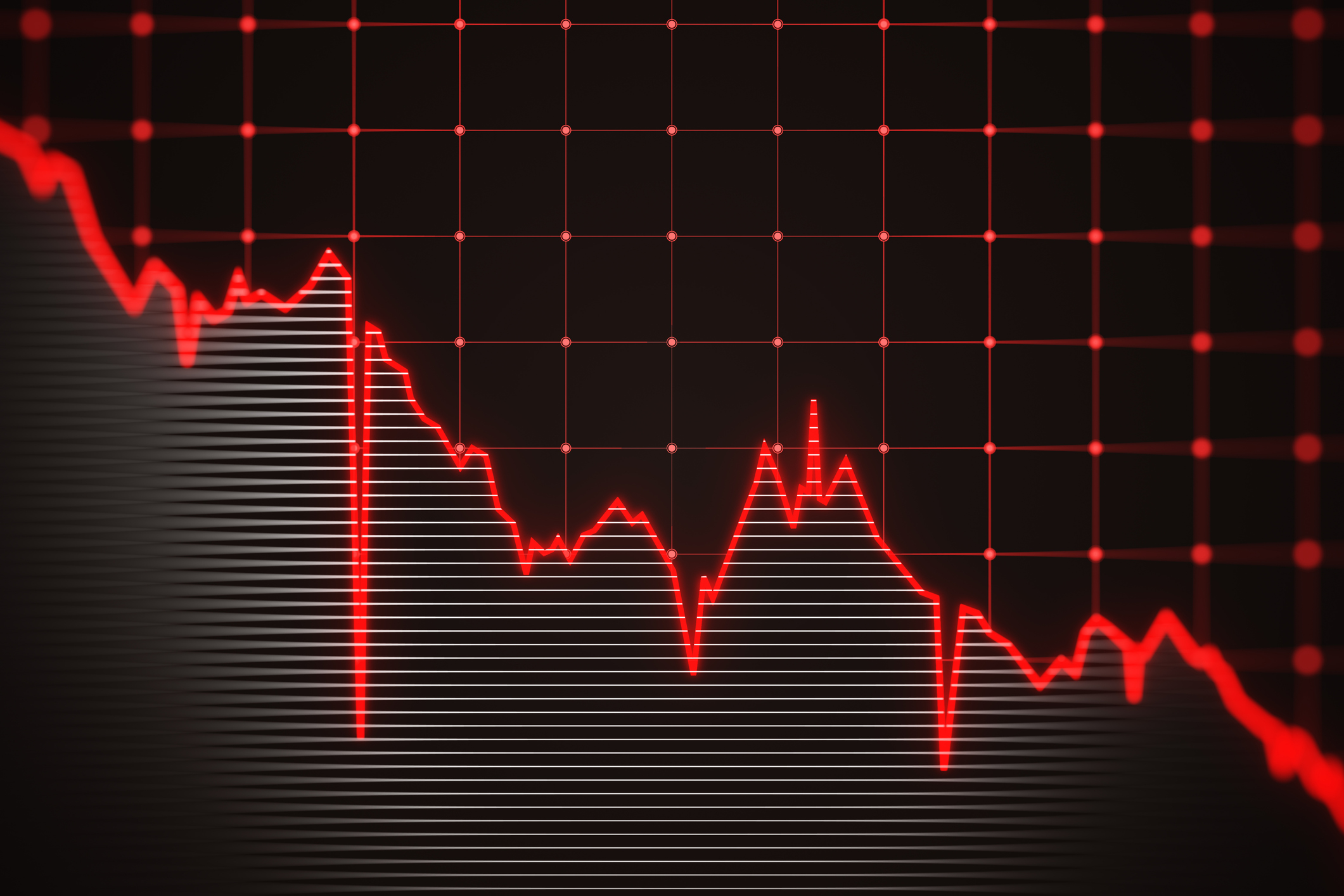Stock Market Today: Stocks End Mixed After Fed Minutes
Most central bankers supported a quarter-point rate hike at the most recent Fed meeting, but a few backed a half-point one.


Stocks were choppy Wednesday as investors looked ahead to and then assessed the mid-afternoon release of the minutes from the Federal Reserve's February meeting. While the release of the minutes showed that more rate hikes are certainly coming, they also revealed a difference of opinion among central bankers as to just how high the next one will be.
The Fed minutes showed most central bankers supported the 25 basis point rate hike made earlier this month. The downshift to a smaller rate increase would better allow the Fed to "assess the economy's progress" and "determine the extent of future policy tightening," the minutes said. However, a few central bankers believed that a larger rate hike "would more quickly bring the target range close to the levels they believed would achieve a sufficiently restrictive stance."
The minutes also indicated support for another 0.25% rate hike at the Fed's March meeting. But recent economic data, including a blowout jobs report, hotter-than-expected inflation pressures, and solid retail sales, means that a bigger hike of 50 basis points could be on the table.

Sign up for Kiplinger’s Free E-Newsletters
Profit and prosper with the best of expert advice on investing, taxes, retirement, personal finance and more - straight to your e-mail.
Profit and prosper with the best of expert advice - straight to your e-mail.
"The futures market still sees a higher probability of 25 basis points for the March 22 Fed meeting, although if more current data releases indicate stickier inflation, that could change to 50 basis points," says Quincy Krosby, chief global strategist for LPL Financial. "The Fed has the luxury of a strong labor market, and overall resilient economic landscape, to keep raising rates until the Federal Open Market Committee (FOMC) feels comfortable that inflationary pressures are closer to its price stability mandate."
The minutes overall suggested a "wait-and-see approach," Krosby says, but should inflation continue to climb, there could be enough voting members in the data-dependent Fed to "push for a 50 basis point move."
At the close, the Nasdaq Composite was up 0.1% at 11,507, while the S&P 500 was off 0.2% at 3,991, and the Dow Jones Industrial Average was 0.3% lower at 33,045.
Why investors should buy dividend growth stocks
The market's weakness in recent weeks has likely jarred investors that were enjoying the run up to start the year. However, the pullback has "actually been tame and perfectly expected, given the sudden and significant market rally seen throughout January and in part of February," says David Bahnsen, chief investment officer of wealth management firm The Bahnsen Group.
And amid hawkish Fed commentary and recession uncertainty, it's likely that volatility remains the order of the day – though this is a good thing for long-term investors, Bahnsen adds. Regardless of where the market goes in the near term, investors should focus on high-quality stocks with strong cash flows and dividends. These can be found in the best dividend growth stocks, Bahnsen says, which "provide an additional level of quality in a time where quality is needed." Of course, the best dividend stocks for payout growth are found among the Dividend Aristocrats, companies in the S&P 500 that have increased their dividends for at least 25 years straight.
Get Kiplinger Today newsletter — free
Profit and prosper with the best of Kiplinger's advice on investing, taxes, retirement, personal finance and much more. Delivered daily. Enter your email in the box and click Sign Me Up.

With over a decade of experience writing about the stock market, Karee Venema is the senior investing editor at Kiplinger.com. She joined the publication in April 2021 after 10 years of working as an investing writer and columnist at a local investment research firm. In her previous role, Karee focused primarily on options trading, as well as technical, fundamental and sentiment analysis.
-
 Six Ways to Pay Off High-Interest Debt (and Still Save for the Future)
Six Ways to Pay Off High-Interest Debt (and Still Save for the Future)Get out of debt and reach your goals sooner by starting with a well-thought-out plan.
By Kiplinger Advisor Collective
-
 Vaccines Medicare Covers for Free
Vaccines Medicare Covers for FreeThe U.S. is experiencing an outbreak of measles and is on track to have the most whooping cough cases since 1948; these vaccines Medicare covers for free can keep you safe.
By Donna LeValley
-
 Stock Market Today: No 'Powell Put'? No Problem
Stock Market Today: No 'Powell Put'? No ProblemInvestors, traders and speculators look beyond both another Trump post and more signs of slowing economic activity.
By David Dittman
-
 What Is the Buffett Indicator?
What Is the Buffett Indicator?"It is better to be roughly right than precisely wrong," writes Carveth Read in "Logic: Deductive and Inductive." That's the premise of the Buffett Indicator.
By Charles Lewis Sizemore, CFA
-
 Stock Market Today: Dow Drops 699 Points After Powell Speech
Stock Market Today: Dow Drops 699 Points After Powell SpeechFed Chair Powell warned of a slowing economy and higher inflation but said the central bank isn't ready to cut rates just yet.
By Karee Venema
-
 Stock Market Today: Stocks Struggle Amid Tariff Uncertainty
Stock Market Today: Stocks Struggle Amid Tariff UncertaintyBoeing dropped after China suspended new aircraft orders, while Bank of America and Citi climbed on earnings beats.
By Karee Venema
-
 Stock Market Today: Stocks Gain on Tech, Auto Tariff Talk
Stock Market Today: Stocks Gain on Tech, Auto Tariff TalkThe Trump administration said late Friday that it will temporarily halt tariffs on some Chinese tech imports.
By Karee Venema
-
 Stock Market Today: Stocks Surge to Close a Volatile Week
Stock Market Today: Stocks Surge to Close a Volatile WeekIt was another day with a week's worth of both news and price action, but it ended on a strongly positive note.
By David Dittman
-
 Stock Market Today: Uncertainty Proliferates: Dow Loses 1,014 Points
Stock Market Today: Uncertainty Proliferates: Dow Loses 1,014 PointsWeaker-than-expected consumer inflation data wasn't enough to stabilize sentiment during another volatile day for financial markets.
By David Dittman
-
 Stock Market Today: Tariff Pause Triggers 3,000-Point Dow Rally
Stock Market Today: Tariff Pause Triggers 3,000-Point Dow RallyThe bond market is sending concerning signals as the Trump administration executes its rapid reordering of global trade relationships.
By David Dittman